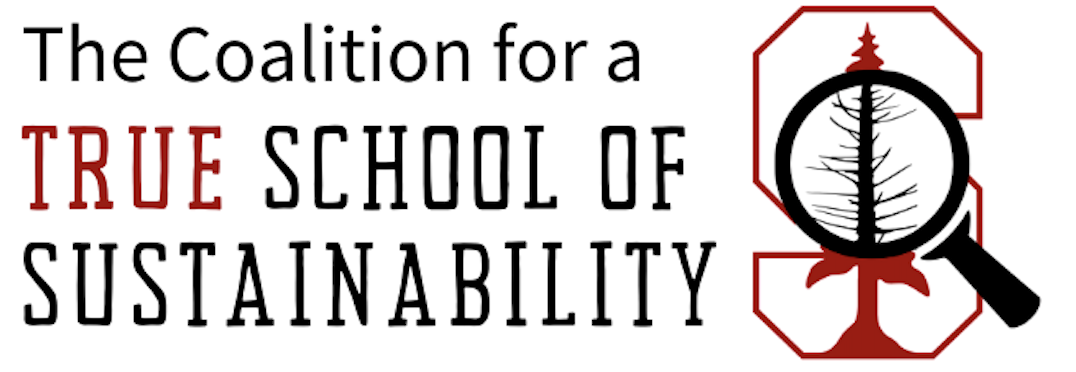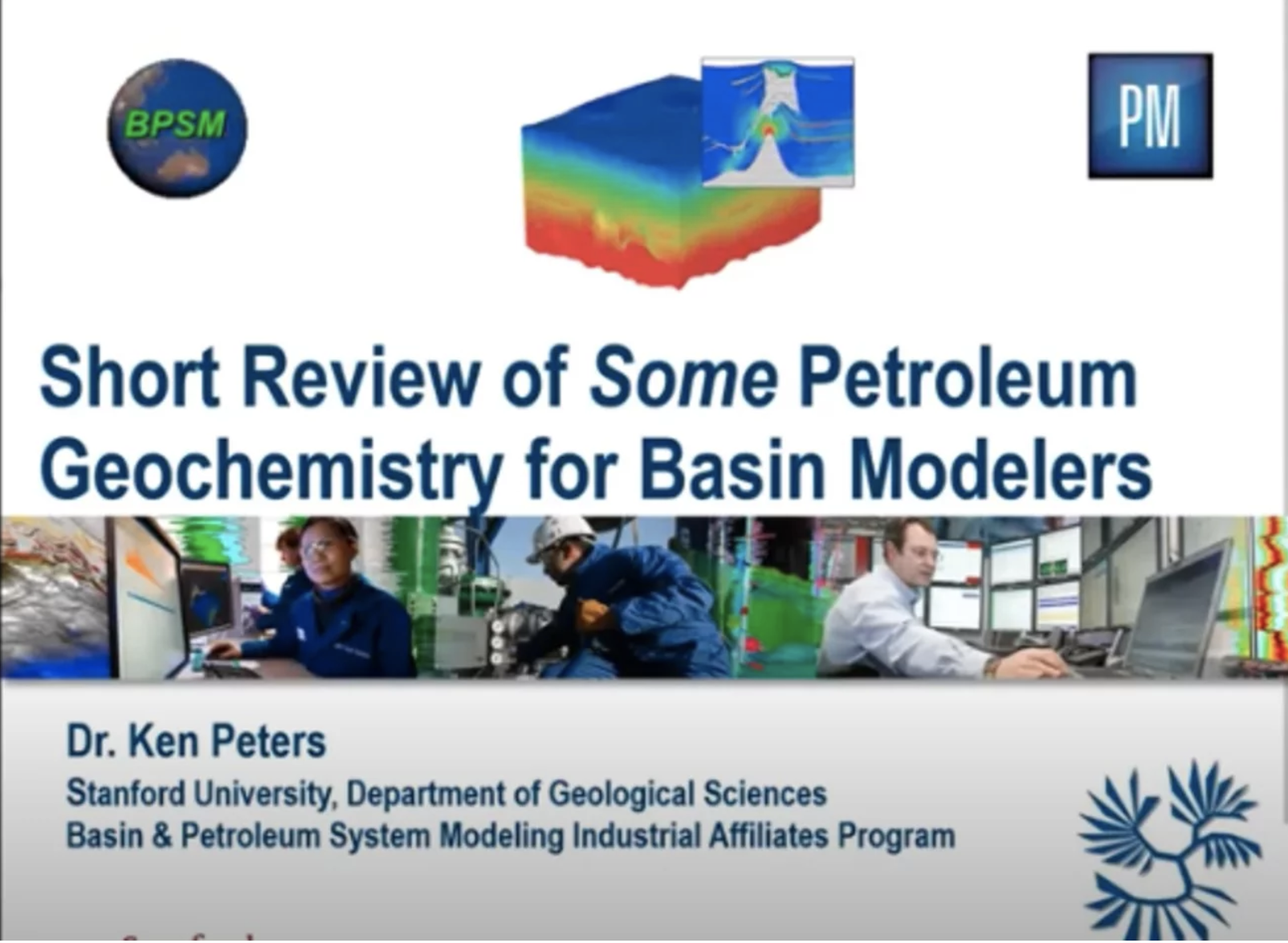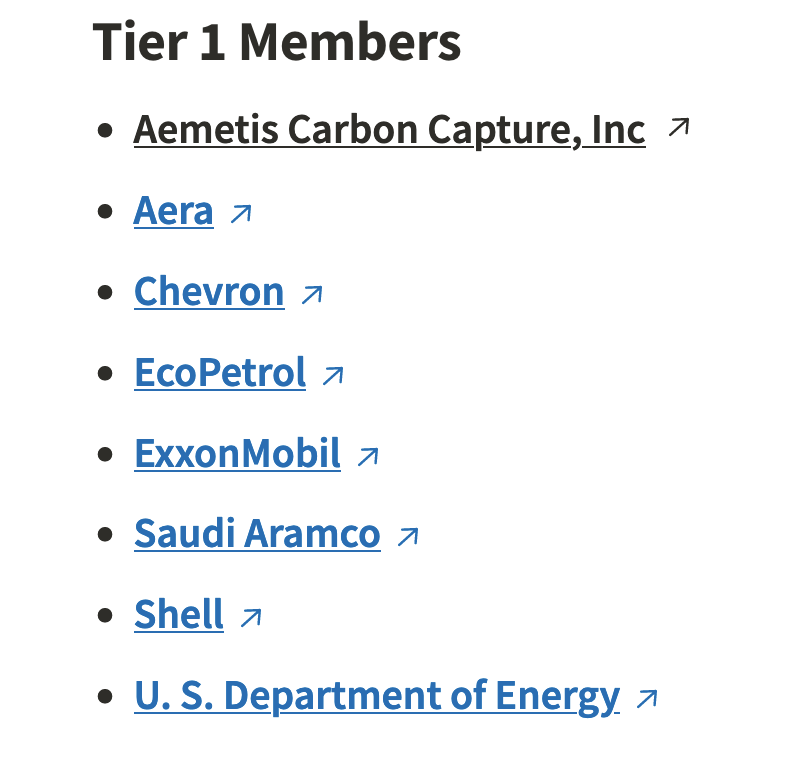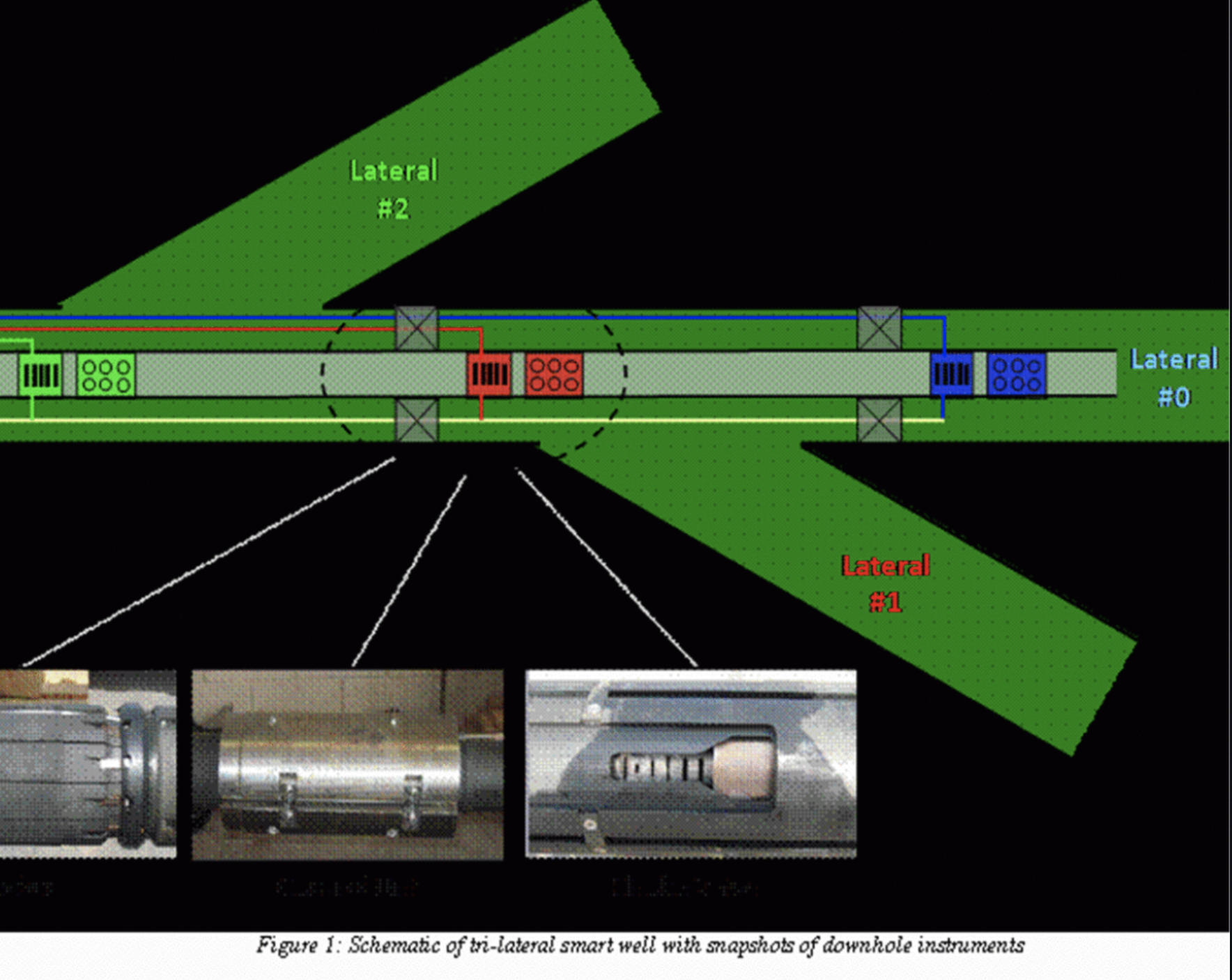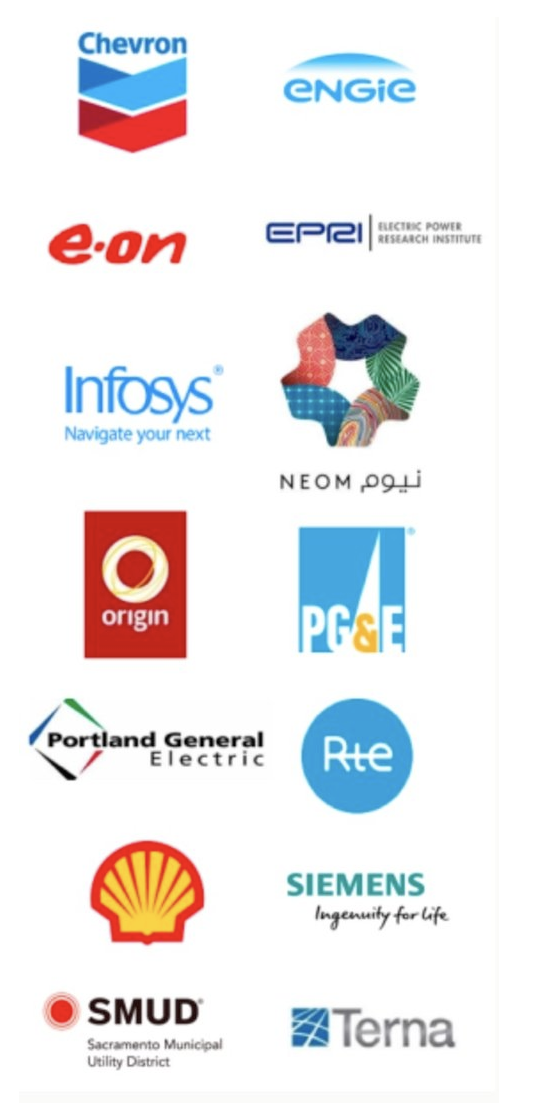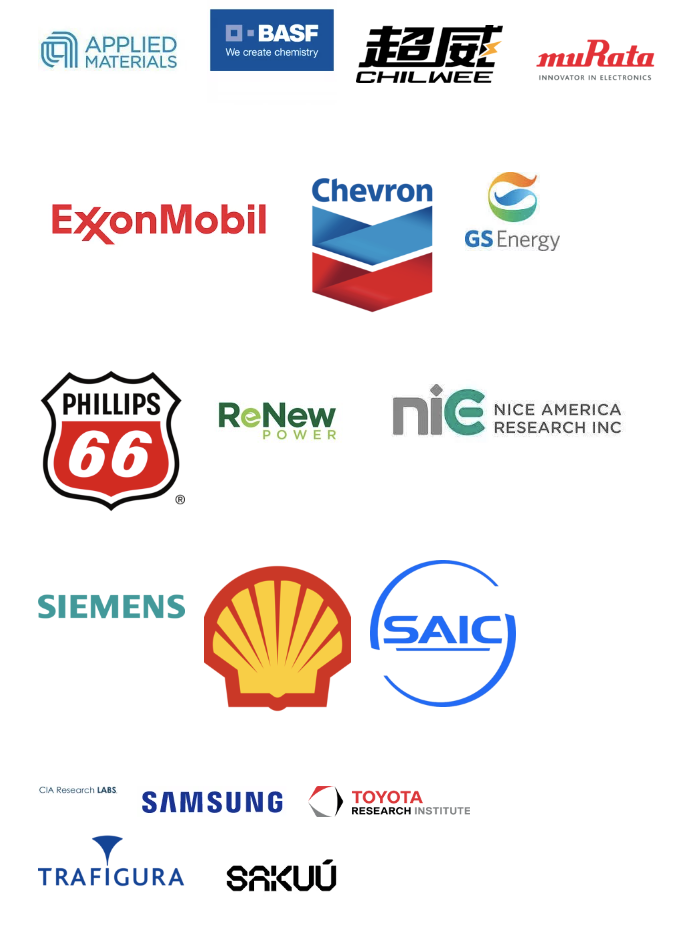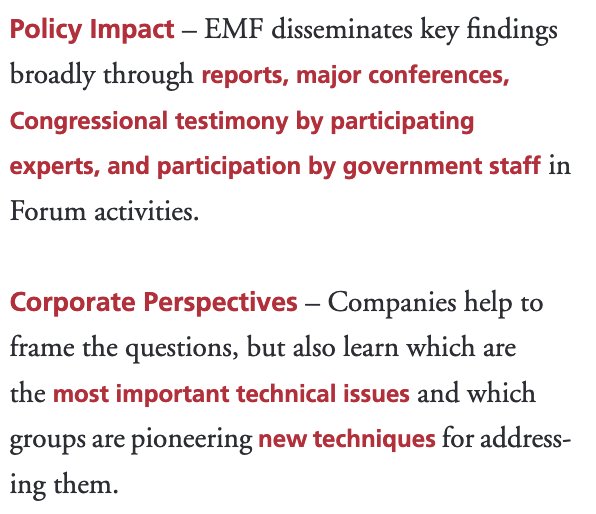
Fossil Fuel Entanglements in the Stanford Doerr School of Sustainability
The School of Sustainability includes 13 Industry Affiliate Programs These affiliates include Chevron, Exxon, Aramco, and several other Big Oil companies.
Many of these affiliate programs support ongoing discovery and extraction of fossil fuels:
Stanford Doerr School of Sustainability Industry Affiliate Projects
Basin Processes and Subsurface Modeling Group
Funded by: Aramco, ConocoPhillips, (Project group website, "Affiliates," 2023)
Total funding: Total funding unclear; annual affiliate membership fee $55,000 (SBPSM "Affiliates," 2023)
Leadership: Stephan Graham, Tapan Mukerji and Jonathan Payne co-directors of research group (Project group website, "People" 2023)
Notes: Stephan Graham co-directs this program and is a current member of the American Association of Petroleum Geologists (Graham's Stanford C.V. , 2023). This project's research agenda is explicitly focused on training future petroleum engineers.
Stated purpose: "The primary objectives are to train the next generation of basin and petroleum system modelers, devise quantitative tools that can be used to rigorously evaluate geologic risk in various exploration settings, and conduct basic and applied energy-focused research" (Project group website, "About," 2023).
Donor benefits include:
Access to ongoing research
Invitations to workshops
Liaisons with faculty
Student recruitment opportunities
Free copies of reports
Campus visits (Program Group Website, Affiliates, 2023)
Stanford Natural Gas Initiative (NGI)
Funded by: Sustaining Members ($250,000 per year): Exxon, Shell. Corporate Members include ($75,000 per year): API, Aramco, BPX Energy (BP subsidiary), Gas Technology Institute, Kinder Morgan, PG&E, Schlumberger, SNAM S.p.A, SoCal Gas, Trafigura, Tudor, Pickering, Holt & Co, Veriten, + Basic Members ($35,000 per year) Full list here
Leadership: Adam Brandt (Stanford NGI "People," 2023)
Notes: Benefits for sustained members counters the Affiliates Program policy that says research will remain independent: "Serving on the governance board of the Natural Gas Initiative to help establish research priorities and recommend projects for seed funding" (Stanford NGI Affiliates Page, 2023).
Stated purpose: "The Stanford Natural Gas Initiative is a collaboration of more than 40 research groups at Stanford University drawn from engineering, science, policy, geopolitical, and business disciplines that works with a consortium of industry partners and other external stakeholders to generate the knowledge needed to use natural gas to its greatest social, economic, and environmental benefit" (NGI, "Home," 2023).
Donor benefits include:
Participation in annual affiliate meeting
Access to informed research
Informal meetings with faculty and researchers
Participation in workshops, seminars, and webinars
Opportunities to engage with energy and environment programs
Students recruitment and diversity initiatives
Participation on NGI governance board
Research-in-progress program
Industrial visiting scholar program
Fellow/mentor/advisor program
Membership in one additional industrial affiliate program
Stanford Exploration Project (recently changed its name to “Earth Imaging Project”)
Funded by: Aramco Services Company, BGP China National Petroleum Company, BHP Billiton Petroleum, BP America, CGGVeritas, Chevron, ConocoPhillips, ExxonMobil, JX Nippon Oil and Gas Exploration, OptaSense, Petrobras, PGS Geoscience and Engineering Division, Repsol, RIPED, Shearwater Geo Services, Shell International Exploration and Production, TGS USA, Total Exploration and Production (SEP "Affiliates," 2023)
Total funding: Unclear; annual affiliate membership fee $55,000 (SEP "Membership," 2023)
Notes: 1970s - present
Stated purpose: "The Stanford Exploration Project (SEP) is an industry-funded academic consortium whose purpose is to improve the theory and practice of constructing 3-D and 4-D images of the earth from seismic echo soundings" (SEP "Home," 2023).
Recent headlines from the group:
"Big Oil’s New Favorite Toy : Supercomputers : Xukai Shen, a geophysicist working at BP Plc (and a SEP alumn), had a hunch he could solve a riddle that had vexed the company: whether there was a lot of oil hidden beneath a salt dome 7,000 feet underwater in the Gulf of Mexico. So he asked to use the company's supercomputer exclusively for two weeks to check it out."
"BP finds trove of oil in Gulf of Mexico using new subsea imaging : British oil major BP has discovered 200 million barrels of oil in a hidden cache in the Gulf of Mexico, thanks to a technological breakthrough allowing the company to see beneath geological formations that had befuddled oil exploration for decades. The algorithm that allowed BP to see under salt was designed by SEP grad Xukai Shen."
"After billion-barrel bonanza, BP goes global with seismic tech : Buoyed by the success of seismic imaging that found an extra billion barrels of oil in the Gulf of Mexico, BP is looking to take its latest technology to Angola and Brazil. The software used in the Gulf, based on an algorithm created by Xukai Shen, a geophysicist straight out of Stanford University, led to BP discovering the crude in an area where it had long thought there was none to be found. Wolfspar development was spearheaded by Joe Dellinger, another SEP alumnus.”
Donor benefits include:
Informal interactions with researchers and networking events
"Exposure to Stanford researchers at a high level, targeted to areas that will best serve the members' interests"
Early access to research progress reports and grad student recruiting (SEP "Membership," 2022)
Stanford Center for Carbon Storage
Funded by: Aemetis Carbon Capture Inc, Aera, Chevron, EcoPetrol, ExxonMobil, Saudi Aramco, Shell, U.S. Dept of Energy (SCCS "Affiliates," 2022)
Total funding: Unclear; Tier 1 Membership $100,000 annually (Tier 2 membership $50,000, only available to NGOs, non-profits, foundations) (SCCS "Affiliates," 2022)
Stated purpose: "Carbon Capture, Utilization, and Storage is a key technology for achieving net-zero greenhouse gas emissions. The Stanford Center for Carbon Storage (SCCS) uses a multidisciplinary approach to address critical questions related to flow physics, monitoring, geochemistry, geomechanics and simulation of the transport and fate of CO2 stored in partially- to fully-depleted oil & gas fields and saline reservoirs" (SCCS "Home," 2022).
Donor benefits include:
"Access to cutting edge research conducted by Stanford faculty, post docs, and Ph.D. students"
"Invitations to Precourt Institute for Energy and Stanford University events, Annual Affiliates meeting and workshop"
"Monthly speaker series/webinar scheduled ad hoc" (SCCS, "Affiliates," 2022)
SUETRI-A
Funded by: Saudi Aramco, Chevron, EcoPetrol, OMV, PetroChina, Shell, Total
Total funding: Unclear, annual affiliate membership fee $40,000 (SUETRI-A "About," 2023)
Notes: Former name: Enhanced Recovery of Oil and Unconventional Resources Current name: Subsurface Engineering for the Energy Transition
Stated purpose: "SUETRI-A is a university-industry consortium focused on education and cross-cutting research to enable the energy transition." Despite the stated mission, a key research path is "enhanced recovery [of petroleum]" (SUETRI-A, "About," 2023).
Donor benefits include:
Ability to "take an active part in the yearly advisory committee meeting"
"Advanced access to reports and publications." (SUPRI-A "About," 2023)
SUETRI-D: Innovation in Well Testing
Funded by: BHP Billiton, Chevron, ExxonMobil, Kappa Engineering, Petrobras, PetroChina, Saudi Aramco, Shell, Total (SUETRI-D " Affiliate List ," 2023)
Total funding: Unclear, annual affiliate membership fee $30,000 (SUPRI-D " Membership ," 2023)
Notes: 1987 - present
Stated purpose: "The SUETRI-D research group investigates and supports novel approaches to the interpretation of oil, gas, geothermal, and water well tests. Backed by a wealth of information thanks to modern computerization and Big Data, well test analysis and design has greatly increased the reliability of test results for far less cost" (SUETRI-D "Home," 2023).
Donor benefits include:
Participation in an annual review meeting in which research is presented
A registration fee for a short course on reservoir simulation
Access to early pre-prints of research reports, papers
Assistance in arranging interviews between students and company representatives and a "substantial increase in the supply of graduates for work in the area of Well Testing"
Logos on the SUETRI-D website (SUETRI-D " Membership ," 2023)
Stanford Smart Fields Consortium (SFC)
Funded by: British Petroleum, Chevron, Ecopetrol, Eni, Halliburton, INPEX, Oxy, RIPED, Saudi Aramco, Tracy Energy Technologies (Stanford SCF "Affiliates," 2023)
Total funding: Unclear; annual affiliate membership fee $50,000 (Stanford SFC "Affiliates," 2023)
Stated purpose: "The Stanford Smart Fields Consortium is a multidisciplinary program that performs state-of-the-art research in... modern [petroleum] reservoir management." (Stanford SFC "Home," 2023)
Donor benefits include:
Engagement with top students for recruitment and "substantial increase in the number of graduates for work in the area of Smart Fields"
Advance copies of publications, reports, software, etc.
Annual meetings to discuss research
Registration fee for short course on reservoir simulation
Possible visits by Stanford faculty to companies' research centers
Possible collaboration on research between Stanford and member companies
Opportunities for joint projects "to demonstrate the value of Smart Fields technologies on real fields" (Stanford SFC "Affiliates," 2023)
Stanford Center for Induced and Triggered Seismicity (SCITS)
Funded by: Chevron, ConocoPhillips, Devon Energy, ExxonMobil, MRC Energy (Matador), Occidental Oil and Gas, Ovintiv, Pioneer Natural Resources, Shell International Exploration (SCITS, 2022)
Total funding: Unclear; annual affiliate membership fee $50,000 (SCITS "Membership", 2022)
Stated purpose: "The mission of the Stanford Center for Induced and Triggered Seismicity is to conduct fundamental research on the physical processes responsible for induced and triggered seismicity, to carry out intensive case studies and to develop a scientifically-based framework for seismic risk assessment and risk management" (SCITS, 2022).
Donor benefits include:
"Informal interactions between companies and researchers" Donors dialogue with researchers about "operational and regulatory issues associated with... induced and triggered earthquakes"
"Networking opportunities" in which they "interact with customers, competitors and partners in a relaxed environment"
"Contact with Stanford researchers at a high level, targeted to areas that will best serve members' interests"
"Ample opportunity" to meet students in a "relaxed environment" (SCITS "Membership", 2022)
Stanford Earth Sciences Algorithm & Architectures Initiative (SESAAI)
Funded by: BP, Chevron, JX Nippon Oil and Gas Exploration, PGS, RIPED, Schlumberger, Shell International Exploration and Production, Inc., Total Energies EP R&T US (SESAAI "Home," 2022)
Total funding: Unclear; annual affiliate membership fee $20,000 (SESAII "Membership," 2022)
Leadership: Hamdi Tchelepi, one of two faculty heads of the initiative, is slated to be in a position of leadership in the Doerr School. His current work in this project involves research into triggered and induced earthquakes for hydraulic fracturing (fracking).
Stated purpose: "The goals of SESAAI are to: 1) Evaluate modern High-Performance Computing (HPC) architectures for reservoir-simulation and seismic-imaging algorithms. 2) Develop new algorithms that take advantage of modern HPC architectures. 3) Develop "data streaming" abstractions that facilitate efficient porting of reservoir-simulation and seismic-imaging codes to modern HPC architectures. 4) Influence the future technological offering by Information Technology (IT) companies to better meet needs of reservoir-simulation and seismic-imaging algorithms" (SESAAI " Home," 2022).
Donor benefits include:
"Informal interactions between companies and researchers”
Dialogue with researchers about "operational and regulatory issues associated with... induced and triggered earthquakes"
"Networking opportunities" in which they "interact with customers, competitors and partners in a relaxed environment"
"Contact with Stanford researchers at a high level, targeted to areas that will best serve members' interests"
"Ample opportunity" to meet students in a "relaxed environment" (SESAAI "Membership," 2022)
Stanford Center for Earth Resources Forecasting (SCERF)
Funded by: Chevron, Eni, ExxonMobil, JAPEX, KoBold Metals, OMV, Oyo Corporation, Petrobras, Repsol (Stanford SCERF "Affiliates," 2022)
Total funding: Unclear; annual affiliate membership fee $60,000 (Stanford SCERF "Affiliates," 2022)
Stated purpose: "To provide solutions for [resource exploration, evaluation, and development] from data acquisition to decision analysis." They provide "quantification of uncertainty of subsurface systems" (Stanford SCERF "Home," 2022).
Donor benefits include:
Engagement with top students for possible recruitment
Facilitated access to research results
Annual meetings to discuss research
Visits by Stanford faculty to companies' sites
Engagement in sponsored research projects(Stanford SCERF "Affiliates," 2022)
SUETRI-B: Reservoir Simulation Research Program
Funded by: Aramco Services, Chevron, ConocoPhillips, EcoPetrol, Eni, ExxonMobil, JOGMEC, Kappa, Petrobras, PetroChina, RIPED, Schlumberger, Shell, Stone Ridge Technology, Storengy, Total (SUETRI-B "Affiliates," 2022)
Total funding: Unclear, annual affiliate membership fee $60,000 (SUETRI-B "Affiliates," 2022)
Notes: One research area is to “develop efficient software tools for the optimization of oil field development and operations” (SUETRI-B, “Research/Optimization,” 2022).
Stated purpose: "Our mission is to constantly advance the state of reservoir modeling technologies, quickly transfer this knowledge to our members, train future leaders in this field, and where appropriate collaborate with member organizations on joint research. Reservoir simulation is the art, science and engineering of modeling flow and transport processes in porous media, including oil and gas reservoirs and aquifers" (SUETRI-B "About," 2022).
Donor benefits include:
Participation in an annual review meeting in which research is presented. They "discuss possible future areas of research interest and areas for research collaboration"
A registration fee for a short course on reservoir simulation
Access to early pre-prints of research reports, papers
Assistance in arranging interviews between students and company representatives
Logos on the SUETRI-B website (SUETRI-B "Affiliates," 2022)
SUPRI-Tides: Analysis of Earth Tides
Funded by: JX Nippon Oil and Gas Exploration Corporation, GERD (SUPRI-I, "Home," 2022)
Total funding: Unclear, annual affiliate membership fee is $50,000 for companies over 100 employees and $20,000 for companies with fewer than 100 employees (SUPRI-Tides "About,” 2022)
Stated purpose: "SUPRI-Tides is a research collaboration to explore the behavior of earth tides and how the data might be used to understand the physical properties of the Earth. Our current research includes work in the following areas: Analysis of Earth Tides to track CO2 injection in CCS projects. Use of Earth and Ocean Tide signals to infer reservoir properties" (SUPRI-Tides "About," 2022).
Donor benefits include:
Participation in an annual review meeting in which research is presented and future directions of research are discussed
Access to early preprints of research reports, papers, and other publications
Assistance arranging interviews with students
Logo on the SUPRI-Tides website (SUPRI-Tides "About," 2022)
Precourt Institute for Energy
Strategic Energy Alliance
Funded by: Exxon Mobil, Bank of America, Total, Shell (Stanford Energy)
Total Funding: Shell gave $20M in 2019, to be used over 5 years (Stanford Energy). Still unknown: total amount of funding from fossil fuel companies, amounts given by individual companies other than Shell.
Notes: 2018 - present
Stated Purpose: "Launched in 2018, the Alliance matches industry members with Stanford faculty members who share common research interests across the spectrum of energy topics from science and engineering to policy and business. The Alliance also seeks to create new financial vehicles that reduce the costs and financial risks of building sustainable energy projects, especially in the developing world" (Stanford Energy, 2019).
Stanford Hydrogen Initiative
Funded by: Chevron, Shell, Phillips 66, GS Energy, SK Energy, Azimuth Capital Management, Technip Energies, Trafigura (Hydrogen Initiative Members List, 2022) Total amount is opaque. "Foundational members" each give at least $250,000 (Stanford Hydrogen initiative "Membership Structure and Members", 2022)
Stated purpose: "The Stanford Hydrogen Initiative is a collaboration of more than 30 research groups at Stanford University from engineering, science, policy, and business, working with industry, thought leaders and governments to accelerate the use of hydrogen to achieve deep decarbonization of the global energy system" (Stanford Hydrogen Initiative "About", 2022).
Donor benefits include:
Grants to support research with industry input and oversight, abiding by Stanford Industry Affiliate standards. Every $75,000 provided for research earns the industry partner one "token," redeemable for one industry affiliate project in any university department, "facilitated Stanford student engagement," and invitation to all Hydrogen conferences, workshops, and education courses. A $250,000 grant also earns the affiliate a seat at the Stanford Hydrogen Advisory Council (Stanford Hydrogen initiative " Membership Structure and Members ", 2022).
Bits and Watts Initiative
Funded by: Chevron, Engie, E.ON, NEOM, Origin Energy, PG&E, RTE, Shell, SMUD, Siemens, Terna, Electric Power Research Institute, Infosys, Portland General Electric (Stanford Bits and Watts initiative "Membership", 2023)
Stated purpose: "Bits & Watts is a Stanford University initiative bringing together multi-disciplinary research teams to develop innovations for the 21st century electric grid. It works to develop a new grid paradigm that is needed to incorporate large amounts of clean power and a growing number of distributed energy resources, while simultaneously enabling grid reliability, resilience, security and affordability." (Stanford Bits and Watts Initiative "About", 2023).
Donor benefits include:
Seats for purchase on the Bits & Watts Strategic Council ($1 million/yr), which steers the research strategy and agenda
Seats for purchase on the Bits & Watts Advisory Council (>$250,000/yr), which “identifies opportunities for future scenarios”
Sponsored Research Collaborations (research to address a technical challenge faced by the company and/or with concerns about confidentiality, IP, or proprietary data).
Source: Member Engagement Options", 2023
StorageX Initiative
Funded by: ExxonMobil, Chevron, GS Energy, BASF, Phillips 66, Shell, Trafigura, CIA Research LABS, Toyota Research Institute, Sakuú, Siemens, ReNew Power, Nice America Research Inc., SAIC, Chilwee, muRata, Applied Materials (Stanford StorageX Initiative "Membership", 2023)
Stated purpose: "Stanford Energy’s StorageX Initiative brings together Stanford faculty from materials science to computer science to economics to tackle the dominant challenges in energy storage. By addressing gaps between academic and industrial R&D, StorageX aims to accelerate the global development and implementation of revolutionary energy storage technologies and concepts" (Stanford StorageX Initiative "Home", 2023).
Donor benefits include:
>1$ million/yr:
Intellectual property benefits (>$1 million/yr)
A seat on the StorageX Advisory Council (>$250,000/yr)
Facilitated Stanford student engagement (>$100,000 million/yr)
Invitation to all StorageX conferences, workshops and education courses (>$100,000)
Source: Stanford StorageX Initiative “Membership," 2023
Carbon Removal Initiative
Funded by: Not yet revealed
Stated purpose: "The initiative will help to enable removal of atmospheric greenhouse gasses at scale by generating and integrating knowledge, creating scalable solutions, informing policies for technology deployment and governance, and demonstrating approaches and solutions with industry collaborators. All of this will be done with a focus on social acceptance and equity, as well as environmental, economic, and social costs." (Stanford Carbon Removal Initiative Brochure, 2023).
Donor benefits include:
Engaging with Stanford faculty, post docs, and PhD students on cutting-edge research
Connecting with other companies in shared research-related programming
Attending annual affiliates meeting workshops
Invitations to Stanford Carbon Removal Initiative (SCRI), Precourt Institute for Energy, Woods Institute for the Environment and Stanford University events
Source: Stanford Carbon Removal Initiative Brochure, 2023
Global Climate and Energy Project (ended 2019)
Funded by: Exxon Mobil, Total, Shell, Schlumberger, at least. ( Stanford Daily , Program Website).
Total Funding: $225 million between 2002-2012. Exxon gave at least $100 million of this. ( Stanford Daily). Still unknown: funding beyond 2012, individual amounts given by companies other than Exxon.
Notes:
Quote from the New York Times, regarding the founding of GCEP in 2002:
“Environmental campaigners noted that Exxon Mobil told investors last month that it was plowing $100 billion over the next decade into a search for new oil and gas reserves.
The money for climate research is ''only one-tenth of 1 percent of what Exxon Mobil will spend over the same time exploring and developing new sources of oil and gas,'' said Pete Altman, the coordinator of a shareholder group pressing to change the company's environmental practices. That development, Mr. Altman said, ''is what is causing global warming in the first place.'' -New York Times, 2002
Description of funding process from GCEP “About us” page:
“26 pre-proposals were received and reviewed by GCEP staff. 16 full proposals were solicited from this pool and reviewed by two independent panels and a group of Sponsor technical experts from industry in a review process established by GCEP.
On the basis of the three sets of expert reviews and their own evaluation, the GCEP technical team suggested that three of the most promising carbon capture proposals and one exploratory effort be funded. The GCEP recommendations were submitted as a slate to the Sponsor Management Committee for review and approval.
At its meeting at Stanford University, the Sponsor Management Committee approved the GCEP recommendations and agreed to fund the carbon capture efforts at a total of $4.9 million. Once the contracts are finalized between Stanford and the research institutions conducting the research, the new awards will be announced publicly.”
Stated purpose: "GCEP's mission is to conduct fundamental research on technologies that will permit the development of global energy systems with significantly lower greenhouse gas emissions.” (Program Website, “About,” 2022) “The concept [for GCEP] arose from discussions between Stanford and ExxonMobil, building on some prior research conversations with Schlumberger; then discussions began with other interested companies that shared the belief that the scope of the research needed called for a new type of global collaboration between academia and industry.” (Program Website, “FAQs,” 2022)
Donor benefits include:
Funders have input on first round and final approval power. (Program Website “About/Program Selection Process,” 2022)
“In addition to significant financial support, the sponsors help GCEP identify and investigate innovative avenues of research to make environmentally sustainable, low-cost energy available to everyone.” (Program Website “About/Sponsors,” 2022)
Chevron Energy Seminars
Funded by: Chevron
Total Funding: Unknown
Stated purpose: "Chevron has sponsored the seminar during fall, winter and spring terms for 10 years. The Precourt Institute covers the cost of the summer seminar. The Energy Seminar was founded in 2007 by Stanford Woods Institute for the Environment" (Annual Report, 2019).
Notes: Students are directly exposed to curriculum detailing climate solutions as presented by Chevron.
Stanford Global Energy Forum
Funded by: Founding sponsors: Exxon, Schlumberger, Total, and others. 2018 and 2022 sponsors: Exxon, Total, Shell, and Others
Total Funding: Unknown
Notes: 2018 - present
Stated purpose: "As the premier energy event at Stanford, the Global Energy Forum brings together a unique delegation of global citizens, industry leaders, energy experts, and innovative problem solvers to holistically address the challenges of the transforming global energy ecosystem" (Stanford Energy).
The Global Energy Forum was the subject of a Coalition Protest in 2022 (see Article).
Energy Modeling Forum
Funded By: American Petroleum Institute, Aramco, BP, Canada Energy Regulator, Chevron, CRIEPI (Japan), Electric Power Research Institute, Electricite de France, Environment and Climate Change Canada, Exxon Mobil, Mitre Corporation, Sandia, Sasol, Schlumberger, Southern Company Services, Transcanada, US Department of Energy, US Environmental Protection Agency, NOAA (SEMF "Affiliates," 2022)
Total Funding: Total funding unclear. Affiliate membership fee is $20,000 annually. Funding also comes from the US DOE, the US EPA, and NOAA (SEMF, "Affiliates," 2022)
Leadership: John Weyant and Hillard Huntington (SEMF, "People," 2022)
Stated Purpose: "EMF seeks to improve the use of energy and environmental policy models for making important corporate and government decisions. Three major goals guide this effort: 1) Harness the collective capabilities of multiple models to improve the understanding of important energy and associated environmental problems 2) explain the strengths and limitations of competing approaches to the problem, and 3) provide guidance for future research efforts (SEMF, "About," 2022).
Donor Benefits include:
Corporate Perspectives - Companies help to frame the questions, but also learn which are most important technical issues and which groups are pioneering new techniques for addressing them (EMF Brochure, 2022)
Policy Impact – EMF disseminates key findings broadly through reports, major conferences, Congressional testimony by participating experts, and participation by government staff in Forum activities (EMF Brochure, 2022)
Feedback on assumptions used by the affiliates in their energy modeling and planning
Interaction between member Affiliates from energy and automobile companies, utilities, and government agencies and learning that they share many common prospects and problems
Active participation with a broad-ranging set of contacts in the energy analysis and policy communities in the US and abroad
Closer professional interactions with Stanford faculty, staff, and students conducting energy modeling and policy analysis
Engagement with the Forum's staff and research results through advance copies of publications and papers (SEMF, "Affiliates," 2022)
